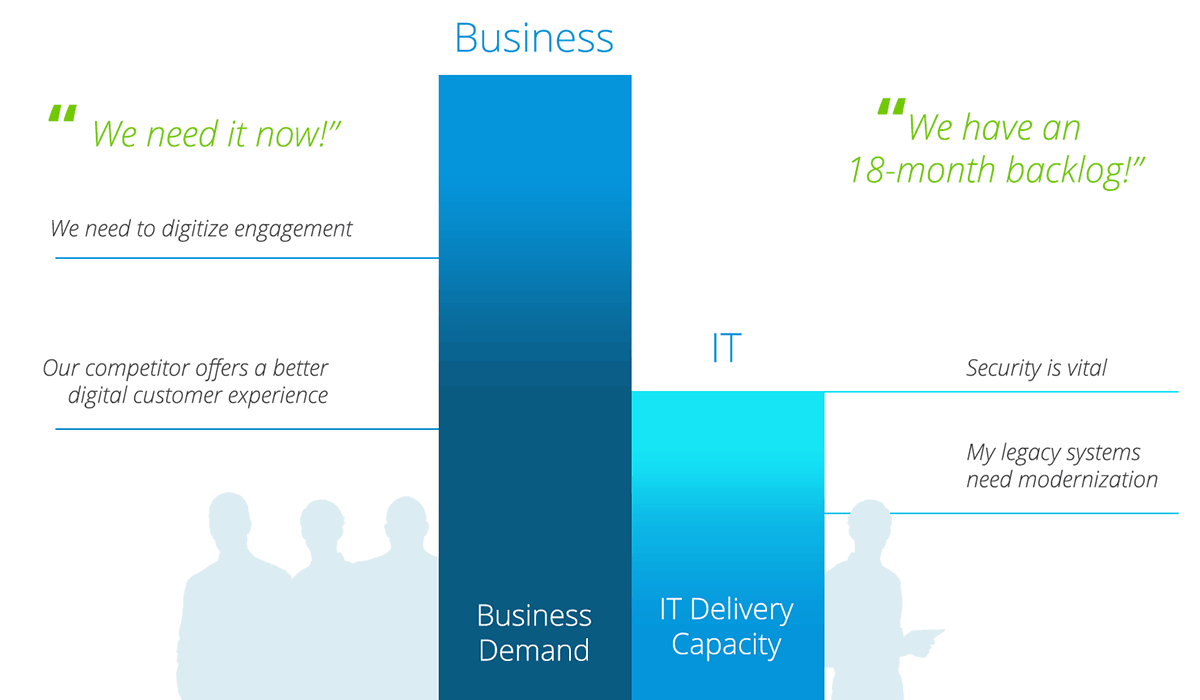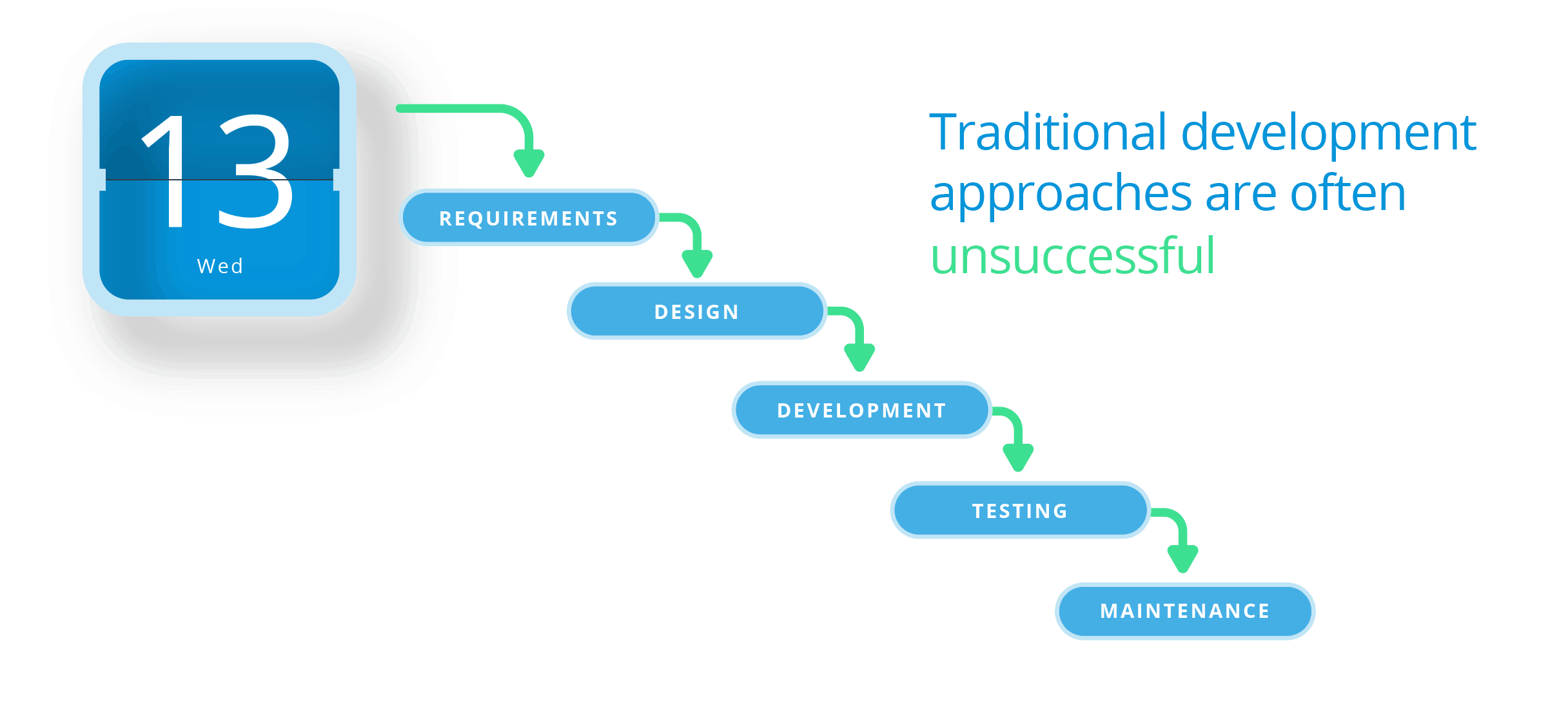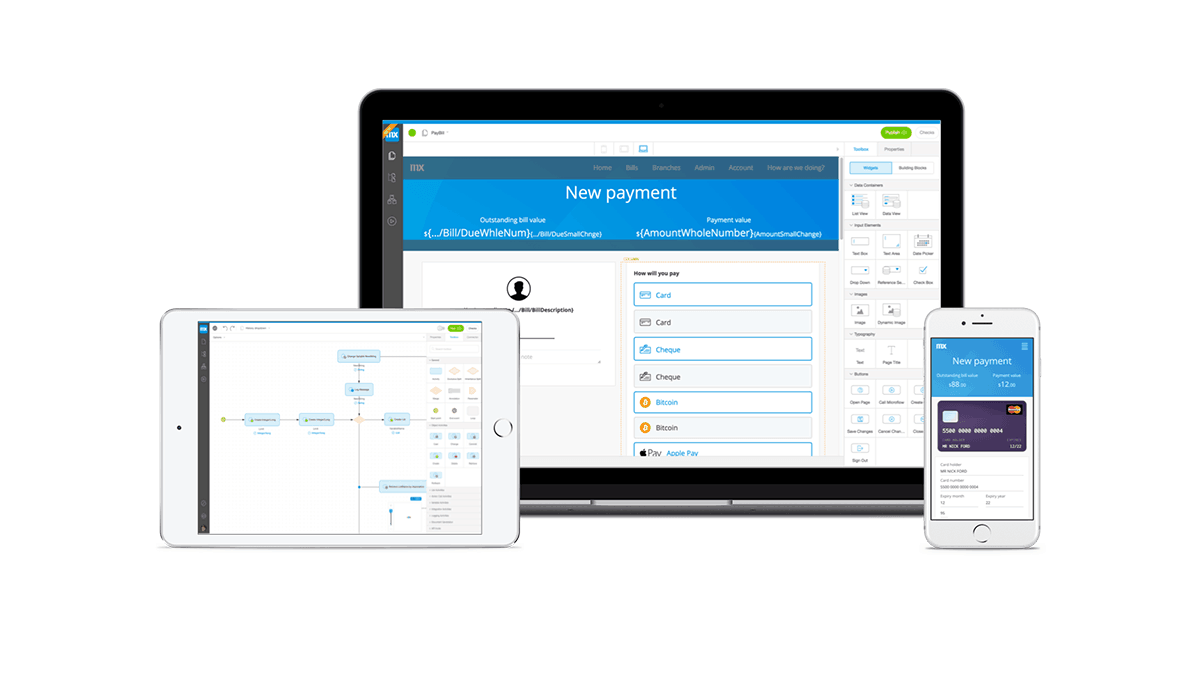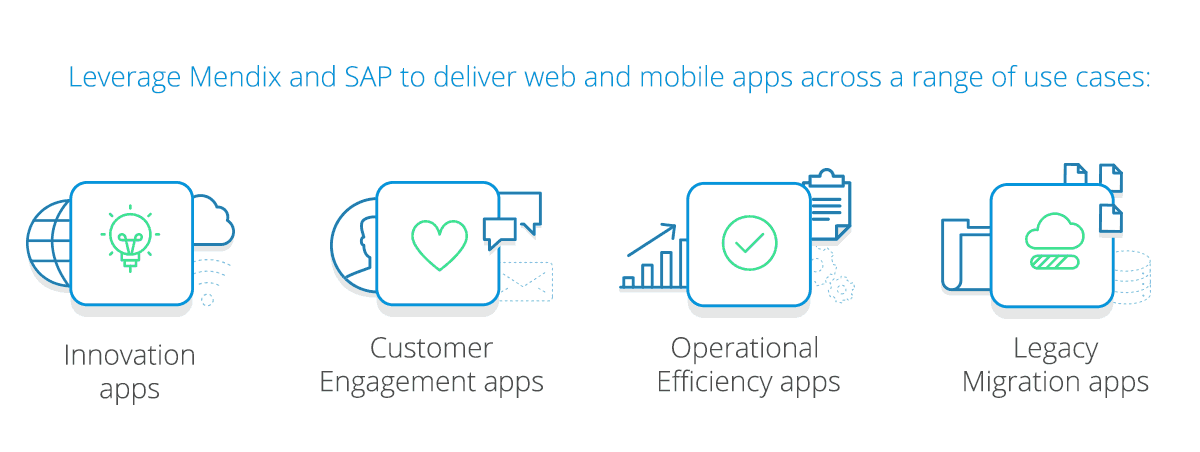“I understand you want that app built but it’s below the IT budget line. And even if it was funded within the IT budget, we don’t have enough developers to start working on it for another six months.”
“Can I hire external resources from my own budget to get it done?”
“Perhaps, but getting external resources access to our systems will take a few months. Contact the Procurement team.”
This discussion above captures the pain felt every day in most Enterprises. Business leaders feel handcuffed by their IT teams who are unable to support all the business needs, and IT teams feel beat-up by their business stakeholders for never being able to meet expectations.
You want innovative apps that use IoT and AI technologies to improve customer experience or reduce costs? Yep, right after we’re done maintaining our 15-year-old order management system. In FY-never.

As a former executive in a Fortune 50 enterprise, I was exposed to this debate and angst frequently. Teams across Marketing, Sales, HR, Operations and Finance in different Business Units regularly competed for the same, extremely limited IT resources, and IT teams were constantly called out for never doing enough to help their business counterparts. Never mind that the apps that did get prioritized and delivered were rarely on schedule and frequently failed to deliver the intended business value. We’d just start the same cycle of horse-trading all over again with the next budget cycle.
If you always do what you’ve always done, you always get what you’ve always got
Large Enterprises have incredible advantages – global brand recognition, large customer footprint, strong infrastructure and processes, and access to a deep talent pool. However, in a world where anyone can start a business with a few clicks, enterprises have to find ways to digitize their operations so they remain differentiated with better products and customer experiences, and constantly improve operational efficiency. Pushing harder on IT and using legacy app development processes and tools simply doesn’t work anymore.

At Mendix we’ve always believed that digital innovation happens at the intersection of business & IT teams. The business holds the best understanding of the market and customer needs. And IT is where the technology expertise resides. Bringing business users closer to the development team, in a way that traditional silo-ed development approaches simply can’t enable, is critical to not just build apps quickly, but to build the right apps that meet business needs in the first attempt. This simple insight is woven into every aspect of the Mendix platform, and separates us from all the other players in the market for High-Productivity Application Platforms.
Our customer-first approach culminates in a great partnership with SAP
In the enterprise, though, building the right apps isn’t enough. Because when you do deliver the right solutions, you need to be able to quickly scale them so your entire organization and customer-base can derive the full benefits.
One of the most important strategic decisions we made early-on was to integrate the Cloud Foundry (CF) interoperable Platform-as-a-Service (PaaS) framework into our cloud runtime architecture, offering enterprises unrivaled deployment flexibility, portability, and scalability. Just last week, we extended that flexibility by adding support for the Kubernetes container orchestration system, so customers can deploy and manage Mendix apps across Kubernetes-orchestrated server clusters via Docker containers.

This focus to always offer our customers unrivaled scale, availability and flexibility has led to another industry-first milestone today with the announcement of a global reseller partnership with SAP – also a Cloud Foundry distributor – who adopted Mendix as its worldwide low-code solution.
Through this agreement, SAP will resell and support the Mendix platform under the name SAP® Cloud Platform Rapid Application Development by Mendix. This solution will help enterprises build custom applications on their SAP systems much faster than traditional development approaches allow.
SAP is a software powerhouse with more than 355,000 customers, helping companies across the globe run their operations on software solutions like Ariba, Concur, Hybris, SuccessFactors, Cloud Platform, Leonardo, and S/4HANA. SAP customers can now create apps with integrated connectors for the most popular SAP systems, and deploy seamlessly to the SAP Cloud Platform, while being backed by the same high standards of quality and support enterprises expect from SAP’s own IP.
So what’s in it for you?
If you’re a leader in an enterprise that uses SAP systems, and your development team isn’t able to deliver the right apps fast enough for your business, I think you and your team will be amazed at how quickly Mendix can help them create apps without having to write a single line of code. It’s now possible to connect to your SAP systems and deploy into production in minutes – all while your business users are involved in every step of the app development process so the apps you build deliver exactly what your business needs.

If like most enterprises, you have power-users of MS Access, Visual Basic or SQL in your Ops teams, you can build and deploy pretty much any apps your team can think of. HR teams can now create their own employee-onboarding portals using data from SuccessFactors. Sales teams can create customer dashboards by combining data residing in your SAP CRM and ERP backbones. Your Customer Care teams can build web and mobile apps that leverage chatbots to deliver on-demand support. Your Marketing teams can create and reuse Event-Registration apps and Budget Trackers without having to shell out tens of thousands of dollars to external development agencies. Your Finance teams can build workflow apps so PO approvals can happen faster, outside MS Outlook. And as your business executes with greater speed, your IT team maintains complete control of the entire development environment.
You can see a sample of the possibilities in this blog, where our Evangelist team created a financial services app using SAP services in just 10 days.
